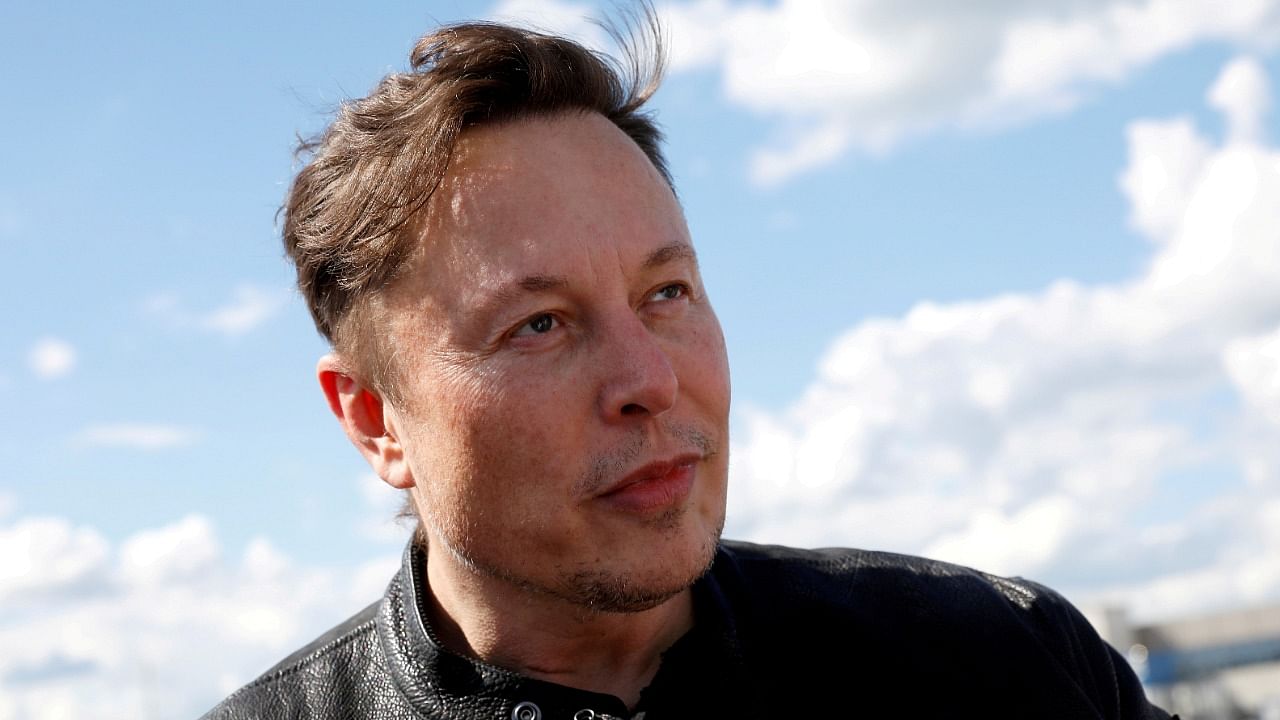Two years after Elon Musk elicited audible gasps from an awards show audience with his surprise announcement that Tesla Inc. would build a factory outside Berlin, the project is nearing fruition and the hype has never been more palpable.
One analyst recently compared the series of innovations Musk is pursuing at the plant with Henry Ford’s revolutionary moving assembly line. Volkswagen AG’s chief executive officer this month expressed worry Tesla will be able to crank out an electric car in a third of the time it’s taking his company — a disparity that would jeopardize jobs.
Musk has billed the novelties Tesla is working on as transformative to the structural design of its vehicles. He wants to use massive machines — as long as a semitrailer and tall as a two-story home — to produce front and rear body parts using single pieces of metal. Pulling this off would save time and cost, reduce weight and improve driving range.
Read more: Some new Teslas delivered with missing USB ports: Report
All this buzz will sound familiar to those who followed the launch of the Model 3 a few years back. The perennially promotional Musk touted an effort to build a highly automated “alien dreadnought” manufacturing system that went disastrously awry and nearly bankrupted Tesla. Today, the company has vastly more resources to support its CEO’s desire to push the envelope with regard to how cars are made.
“The big picture here is that Tesla has the opportunity to completely reinvent the car manufacturing process for vehicle production and factories,” Adam Jonas, Morgan Stanley’s top auto analyst, wrote in a report last month. “Tesla is building the car factory of the future.”
Musk summed up Tesla’s pursuit in a simple way early this year. “With our giant casting machines, we are literally trying to make full-size cars in the same way that toy cars are made,” he tweeted in January.
On billboards strewn about Tesla’s factory when it opened to the public for a day last month, Tesla said it would inject aluminum into the world’s largest die-casting machines, which will then clamp the metal using 6,100 tons of pressure — a force equivalent to 1,020 African elephants standing on the tool to form parts.
The plant will house eight of these machines, with Musk aiming to eventually stamp out the two biggest parts of its Model Y sport utility vehicles — the front and rear underbodies — each with just one piece of metal. The current Model 3, by contrast, comprises 70 metal pieces just for the rear underbody.
While Musk has used a term for these machines — “Giga press” — that suggests Tesla conjured them in-house, this isn’t the case. The company has been buying them from Idra Group, a closely held Italian company that’s sold them to three customers on three continents and is in talks with other carmakers and major suppliers.
The front and rear castings will interface with frames beneath Model Ys that will house batteries built into the structure of the vehicle. This, too, could be a step change — Tesla and other EV makers have to this point been housing their batteries in sheet metal, then sealing those coverings to separate floorpans.
Musk touted the ramifications of simpler and more integrated battery and body manufacturing during Tesla’s “Battery Day” event last year. He claimed the company could reduce investment per gigawatt hour of battery output by 55% and shrink the amount of plant-floor space needed by 35%.
For all the upside Musk has described, he’s also acknowledged Tesla will be gambling in Gruenheide, a town about an hour’s drive east of the German capital.
“Lot of new technology will happen in Berlin, which means significant production risk,” Musk tweeted in October of last year. Tesla’s plants in Shanghai and Fremont, California, will attempt the same transitions in about two years, when the new tech is proven, he wrote at the time.
Five months after that post, a “Giga press” in Fremont was involved in a minor fire. The machine melts aluminum alloy at up to 850 degrees Celsius (1,530 degrees Fahrenheit) before the metal is moved into an only somewhat less-hot holding oven. Morgan Stanley’s Jonas wrote in his October 24 report that the manufacturing process is tricky in part because the alloy must enter at a speed that ensures even cooling across the structure.
Germany’s automakers are watching Tesla’s progress closely. VW may build a new EV factory near its sprawling Wolfsburg headquarters in direct response to Musk’s foray.
Earlier this month, VW’s CEO Herbert Diess sought to rally his workers for the challenge. He warned Tesla may manage to make an EV in just 10 hours, versus the more than 30 hours VW needs at its plant in Zwickau. VW’s new factory would make 250,000 EVs a year and aim to catch up to Tesla on production time.
Morgan Stanley’s Jonas last month increased his forecast for how many cars Tesla will crank out annually by the end of the decade by 2.35 million, citing his expectation that Tesla will produce an average of more than 800,000 vehicles per plant by 2030. That’s far greater than the capacity for 500,000 units the company claims for its Fremont factory now.
“We have yet to see the ‘moving assembly line moment’ in the EV industry,” Jonas wrote, referring to Henry Ford’s 1913 breakthrough. “We believe the time is approaching for that moment. And we believe Tesla is uniquely positioned to push the boundaries at the epicenter of a manufacturing change in auto making.”
BMW AG’s production chief Milan Nedeljkovic told reporters at an event last month that the carmaker hasn’t worked with big casting components like Tesla, in part because this would reduce the flexibility it needs to produce several different kinds of models on the same assembly lines. Tesla’s new approaches intrigue him, nonetheless.
“If it works, maybe it’s something we’d consider,” Nedeljkovic said.
check out the latest DH videos:
